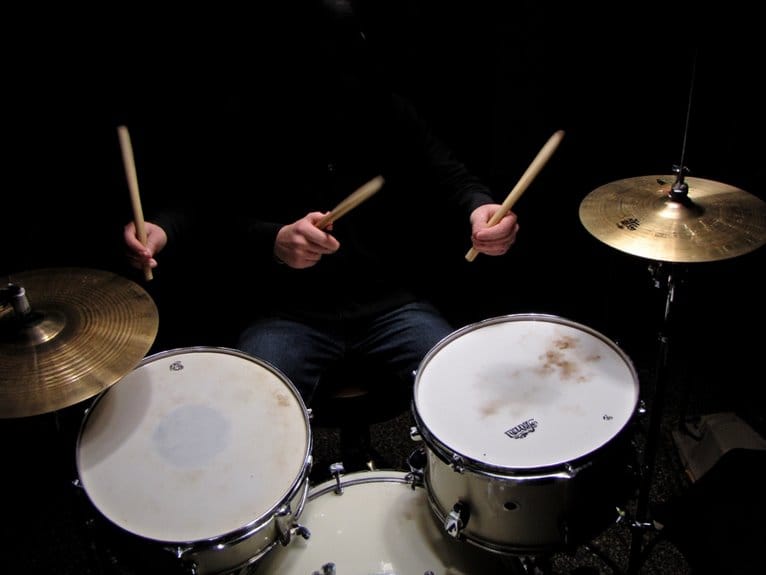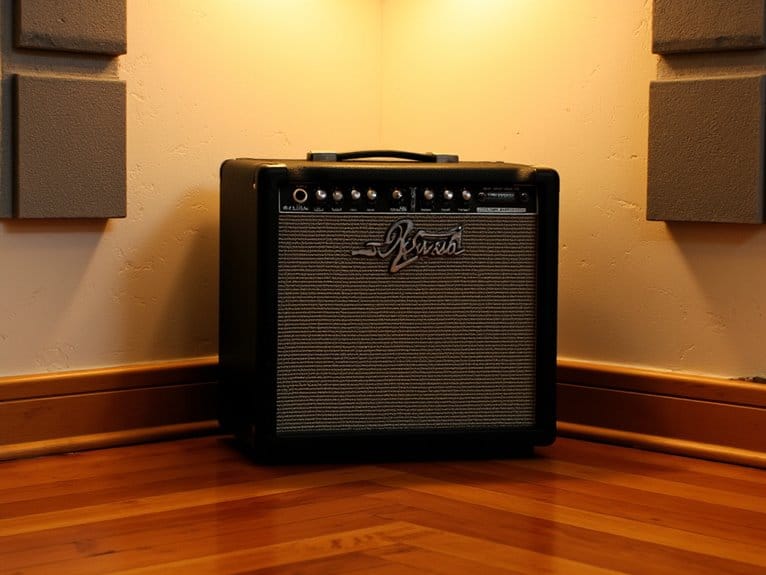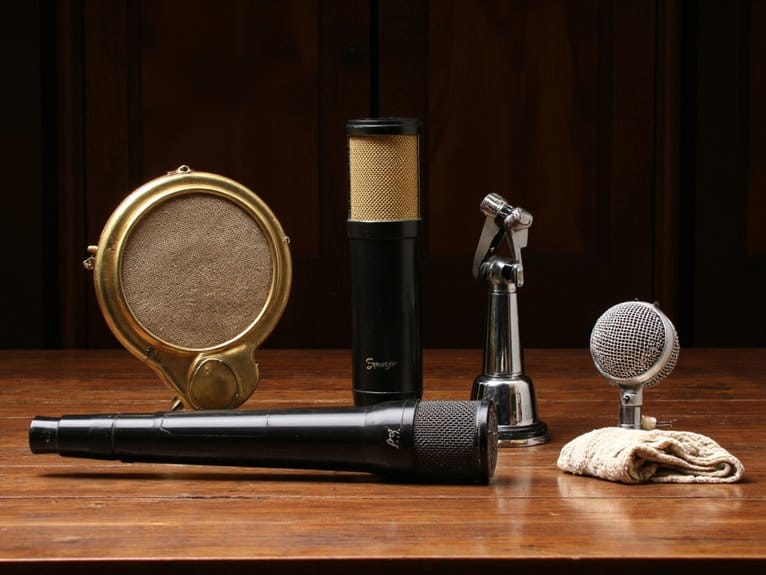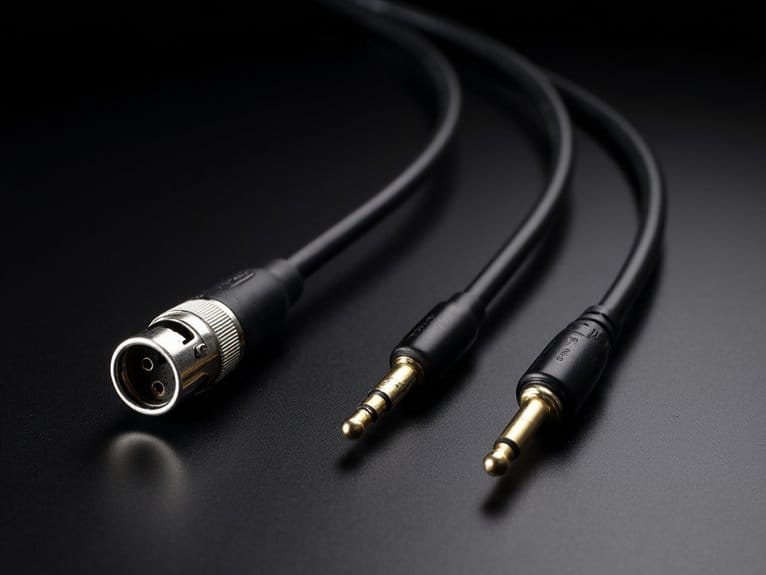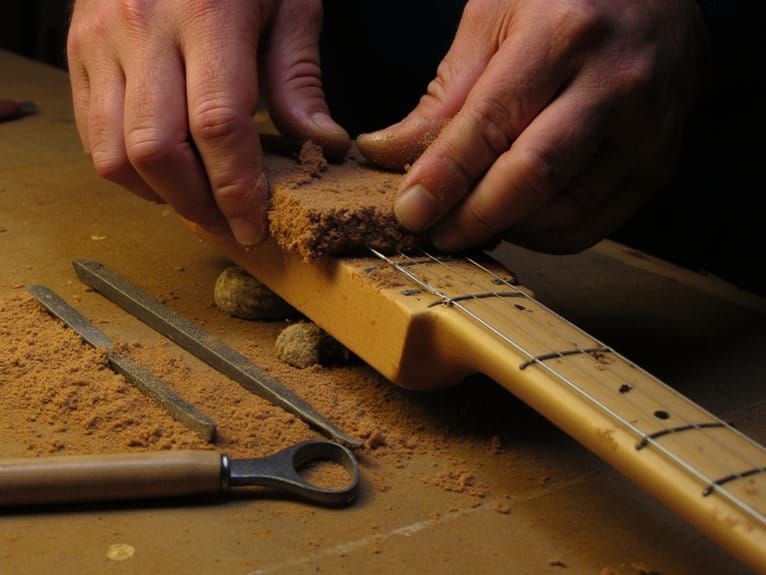Linear Drumming: Non-Overlapping Limb Technique
Linear drumming requires you to play with only one limb striking at any given moment, creating sequential patterns that eliminate simultaneous hits between hands and feet. This technique demands precise timing and articulation control, as each note must ring clearly without overlapping ghost notes or unintended strikes. You’ll find this approach revolutionizes groove construction across genres from funk’s syncopated patterns to jazz’s complex textures, with masters like Steve Gadd and David Garibaldi pioneering foundational techniques that continue shaping modern drumming approaches.
We are supported by our audience. When you purchase through links on our site, we may earn an affiliate commission, at no extra cost for you. Learn more.
Notable Insights
- Linear drumming requires only one limb to strike at any given moment, creating sequential patterns without simultaneous hits.
- Precise timing and articulated notes are essential, demanding accurate sticking and rebound control to prevent ghost notes.
- Start with 16th note patterns using basic combinations like RLRK, gradually increasing complexity through systematic limb permutations.
- This technique transforms groove construction across genres from funk’s syncopated patterns to jazz’s complex textural independence.
- Practice involves systematic tempo adjustments, breaking grooves into segments, and recording sessions to identify inadvertent overlaps.
Core Principles and Technique Fundamentals
While traditional drumming often relies on multiple limbs striking simultaneously to create rich, layered textures, linear drumming takes a fundamentally different approach that I’ve found both challenging and rewarding in my years behind the kit.
You’ll discover that this technique demands only one limb strikes at any given moment, creating sequential patterns where your hands and feet never overlap.
The core principle centers on maintaining timing precision while executing clean, articulated notes that flow seamlessly together.
Unlike traditional independence training where you’d coordinate multiple limbs simultaneously, linear drumming requires sticking accuracy and precise rebound control to avoid ghost notes or unintended overlaps, transforming your approach to groove construction entirely. Quality drumsticks with superior durability become essential for maintaining consistent articulation when practicing these demanding sequential patterns.
For beginners exploring this technique, practice drum pads offer an excellent way to develop linear patterns without disturbing neighbors while building the fundamental coordination skills necessary for this demanding style.
Rhythmic Patterns and Limb Coordination
When you’re building rhythmic patterns for linear drumming, the foundation starts with understanding how subdivisions create the framework for your limb coordination, and I’ve found that mastering 16th note patterns first gives you the most practical starting point before exploring triplets or 32nd note variations.
| Pattern Type | Starting Limb | Coordination Focus |
|---|---|---|
| RLRK | Right Hand | Basic limb synchronization |
| LRLK | Left Hand | Alternate coordination flow |
| RLK Triplets | Right Hand | Rhythmic variation timing |
Your limb synchronization improves dramatically when you practice these building blocks at slower tempos, allowing each appendage to develop independent muscle memory before increasing complexity. I recommend starting with eighth note simplifications, then progressing through systematic limb permutations to build that essential rhythmic variation skill that separates linear drumming from traditional techniques.
Genre Applications and Musical Context
The versatility of linear drumming becomes most apparent when you examine how different musical genres have embraced this technique to solve specific rhythmic challenges.
I’ve noticed that each style tends to emphasize particular aspects of the linear approach based on its foundational groove requirements. Funk characteristics shine through David Garibaldi’s syncopated patterns, where non-overlapping limbs create that signature off-kilter groove you can’t resist moving to.
Funk’s linear drumming creates that irresistible off-kilter groove through strategically separated limb movements that keep dancers locked in the pocket.
Jazz improvisation benefits from linear’s independence, allowing drummers like Steve Gadd to weave complex textures while maintaining conversational ensemble interaction.
Rock elements appear in Jeff Porcaro’s “Rosanna,” where linear technique enhances shuffle feels without muddy overlaps.
Hip Hop integration extends these concepts into programming, where Mac Miller-style beats maintain groove clarity through strategic percussion separation.
Influential Drummers and Signature Grooves
Behind every revolutionary approach lies a handful of pioneers who’ve shaped its development, and linear drumming‘s evolution can be traced through several master practitioners who’ve each contributed their own distinct voice to this non-overlapping limb technique.
Steve Gadd’s drummer influence crystallized through his legendary groove on Paul Simon’s “50 Ways to Leave Your Lover,” establishing the foundational quarter-note linear pattern that countless players still study today.
David Garibaldi transformed funk through his groove innovation with Tower of Power, crafting syncopated eighth-note patterns in “Oakland Stroke” that defined an entire genre’s rhythmic vocabulary.
Modern practitioners have expanded these concepts across diverse musical landscapes:
- Matt Garstka brings progressive metal intensity with lightning-fast sixteenth-note linear sequences
- Tony Royster Jr. and Chris Coleman revolutionized hip-hop drumming through intricate R&B linear applications
- Charlie Watts demonstrated minimalistic linear concepts, proving that restraint often creates the most memorable grooves
Practice Methods and Common Challenges
Although mastering linear drumming represents one of the most rewarding challenges in modern percussion, I’ve witnessed countless drummers abandon their practice routines after hitting the inevitable coordination wall that separates traditional limb independence from true non-overlapping execution. The key lies in systematic tempo adjustments, starting painfully slow to emphasize precise single-limb hits while using metronome settings to gradually build speed without sacrificing clarity.
You’ll need to break complex grooves into small segments, practicing one limb’s pattern before integrating others, which helps overcome common practice obstacles like unintended simultaneous hits. I recommend recording your sessions to identify inadvertent overlapping, employing visual notation to track which limb plays each note, and maintaining patience as muscle memory retrains those ingrained synchronous patterns.
On a final note
You’ve now grasped linear drumming‘s core concept, where limbs never strike simultaneously, creating clean, articulated grooves that’ll elevate your playing across multiple genres. While I won’t sugarcoat it-mastering this technique demands serious practice time and coordination-the payoff in musical clarity and dynamic control makes every frustrating practice session worthwhile. Start slow, focus on precision over speed, and you’ll develop the limb independence that separates competent drummers from truly expressive ones.

